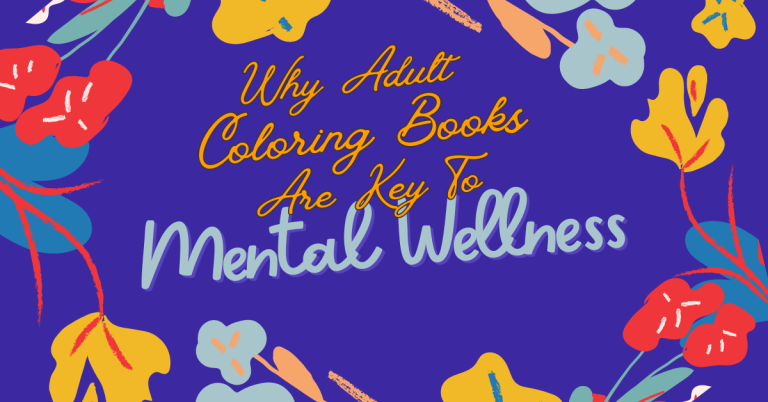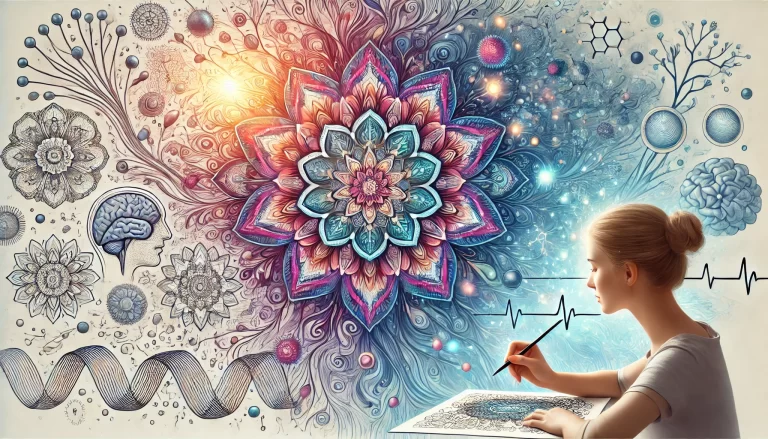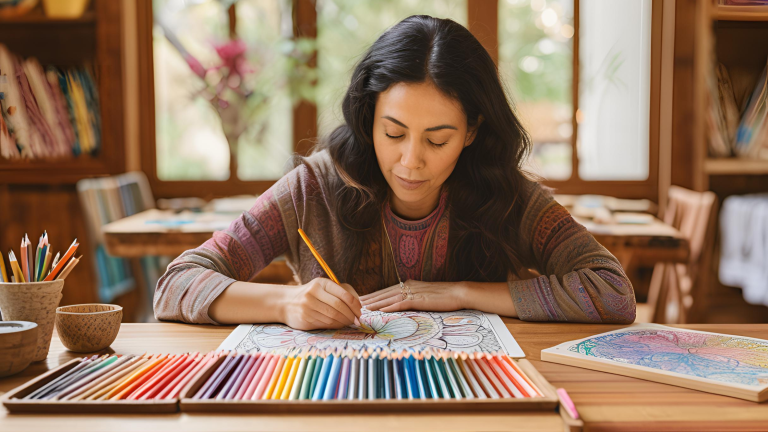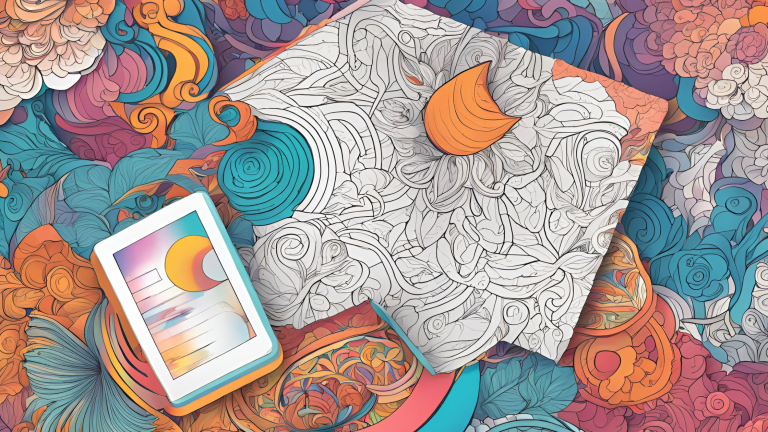Coloring Therapy for Mental Health: Breakthrough Benefits & Innovative Insights
In a world increasingly focused on mental wellness, creative therapeutic tools are gaining momentum. Among them, coloring therapy for mental health has stood out as a simple yet deeply effective practice. Once associated with children’s activities, coloring has been reimagined as a powerful resource for emotional regulation, mindfulness, and psychological healing in adults.
Backed by neuroscience, psychology, and artistic exploration, coloring therapy has entered the spotlight not as a trend, but as a transformative approach to mental wellness. This article explores high-level insights, breakthrough discoveries, and trailblazing ideas that are redefining how we view and use coloring in therapeutic settings.
This post may contain affiliate links, which means we may receive a commission, at no extra cost to you, if you make a purchase through a link. Please see our full disclosure for further information.
https://cmcacess.com/affiliate-disclosure
The Science Behind Coloring Therapy for Mental Health Benefits
Scientific research has shown that engaging in structured, repetitive activities like coloring stimulates the prefrontal cortex and lowers activity in the amygdala—the brain’s fear center. This shift induces a sense of calm and focus, similar to what one experiences in meditation.
Recommended Product: To embark on your coloring journey, consider starting with the Mental Health Is Health Self Care Coloring Book. This book features 25 beautifully illustrated motivational quotes and designs aimed at promoting relaxation and stress relief.
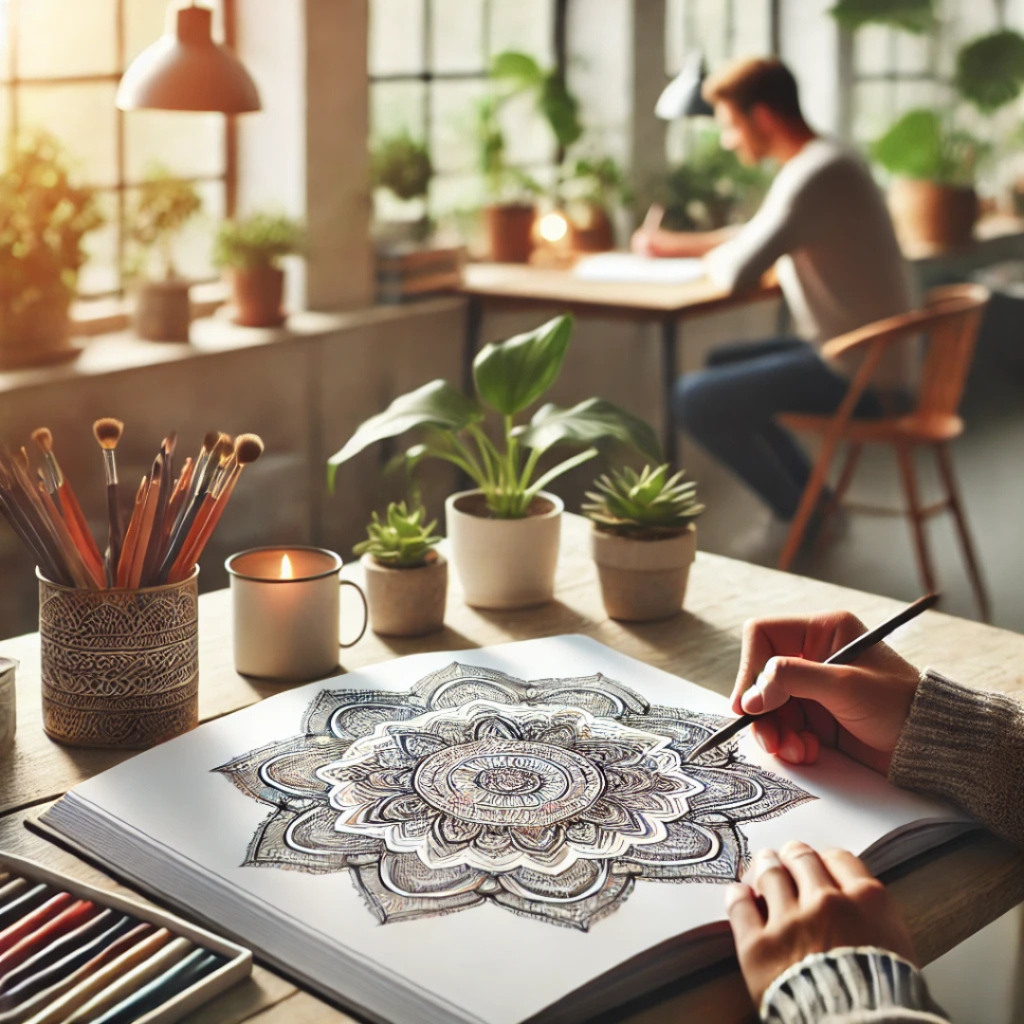
How Coloring supports Brain Function and Reduces Stress
Dr. Joel Pearson, a neuroscientist at the University of New South Wales, found that visual tasks like coloring help reduce intrusive thoughts by occupying the brain’s cognitive load. In short, coloring blocks stress pathways by giving the brain something focused and positive to do. For a more detailed explanation of how this works, check out our post on scientific insights into how adult coloring reduces stress.
The Psychology of Coloring for Emotional Wellness
Moreover, coloring helps release dopamine—the brain’s reward chemical. This makes the act of creating visually pleasing art not only relaxing but emotionally satisfying. These high-level insights give scientific weight to the growing use of coloring therapy for mental health across various therapeutic disciplines.
Breakthrough Mental Health Discoveries in Coloring Therapy
While coloring therapy has been long associated with relaxation, new research reveals its deeper therapeutic implications. One of the most compelling discoveries is its ability to improve emotional processing.
Using Mandalas and Art Therapy to Alleviate Anxiety
Clinical studies have shown that coloring mandalas—a circular geometric pattern often used in spiritual traditions—can significantly reduce anxiety. A 2005 study by Nancy A. Curry and Tim Kasser found that coloring mandalas had a greater calming effect than coloring other types of shapes. This breakthrough suggests that structure and symmetry in art can support emotional stability and mindfulness.
Recommended Product: For those interested in exploring the therapeutic benefits of mandalas, the Mandala Coloring Book offers intricate designs that can aid in reducing anxiety and enhancing mindfulness.Oprah Daily
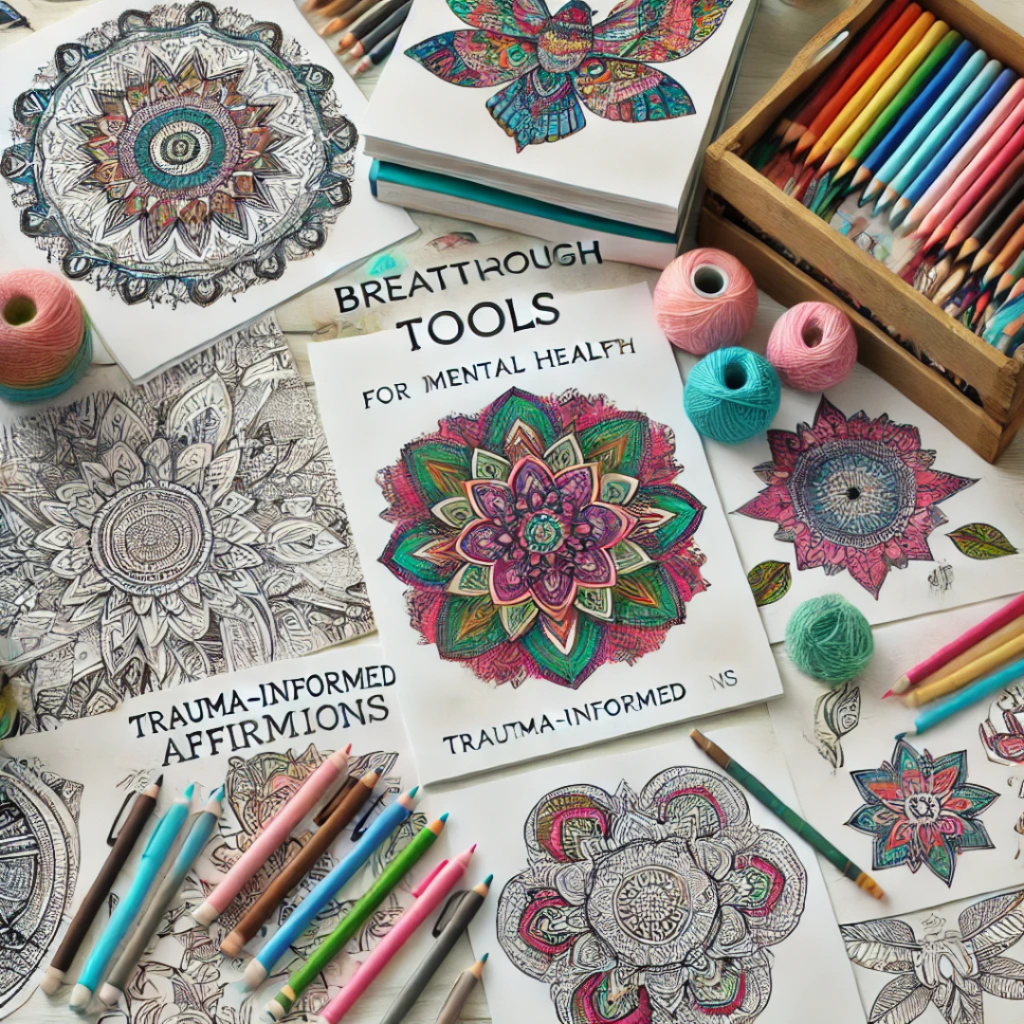
Coloring for Trauma Recovery, PTSD, and Neuroplasticity
Some therapists now use trauma-informed coloring books to help individuals recover from PTSD or early childhood trauma. These books often contain calming imagery, affirmations, and intentionally designed spaces that promote safe self-expression. When paired with therapeutic dialogue, coloring can aid in retraining neural pathways, a concept known as neuroplasticity.
Supporting ADHD and Focus with Coloring Interventions
Coloring therapy has also shown promise for individuals with ADHD. By engaging the brain’s attention networks in a non-verbal, creative way, coloring provides a low-pressure environment where focus can thrive. Therapists working with children and adults with ADHD use coloring as a tool for transitioning between activities, reducing emotional outbursts, and building executive functioning skills.
Trailblazing Innovations in Coloring Therapy Techniques
As the field evolves, mental health professionals and creatives are developing trailblazing ideas to expand how coloring therapy is applied. These innovative approaches are pushing the boundaries of what’s possible through coloring and mental wellness. To stay up-to-date, be sure to explore our feature on the latest trends in adult coloring books.
Tech-Driven and Digital Coloring Therapy for Mental Wellness
The rise of mobile apps and digital platforms has made coloring therapy more accessible than ever. Apps like Colorfy, Lake, and Pigment offer guided coloring experiences that include calming music, ambient sounds, and even cognitive tracking tools. This tech-forward shift is ideal for people who prefer digital expression or travel frequently.
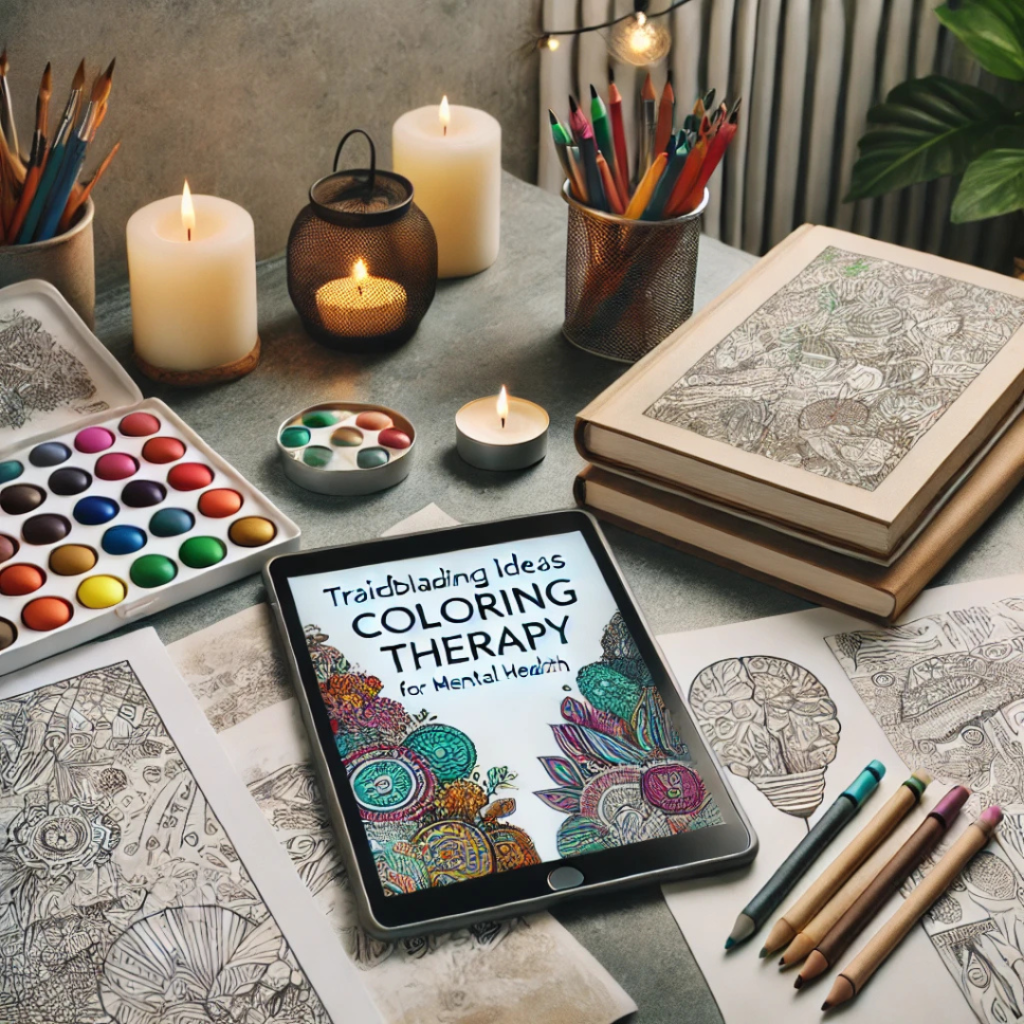
Digital coloring also opens doors for neurodivergent users or those with mobility challenges, offering flexibility in brush type, zoom functionality, and a mess-free creative experience.
Multi-Sensory Coloring for Healing and Sensory Integration
Occupational therapists are integrating coloring therapy into sensory-based interventions. Combining coloring with textured paper, scented markers, or soundscapes helps engage multiple senses at once. This sensory integration enhances emotional grounding and reduces hyperarousal, particularly in clients with autism, sensory processing disorders, or anxiety.
Personal Growth Through Guided Coloring Programs
Coaches and wellness professionals are now incorporating structured coloring challenges into personal growth programs. These often include themed pages (like “Resilience,” “Confidence,” or “Letting Go”) combined with reflection prompts, breathing exercises, or guided meditations. By linking coloring with intention, individuals experience breakthroughs in self-awareness and emotional clarity.
Try Coloring Therapy in Action
Before diving into the next section, try this guided therapeutic art activity designed to help manage anxiety and stress. It’s a great way to experience firsthand how coloring therapy supports mental health.
Practical Ways to Use Coloring for Mental Health Improvement
You don’t need to be an artist—or even consider yourself “creative”—to experience the benefits of coloring therapy for mental health. Here are practical, trailblazing ways to integrate this practice into your daily life:
Recommended Product: For a comprehensive experience, the Secret Garden: An Inky Treasure Hunt and Coloring Book by Johanna Basford offers intricate illustrations that provide hours of mindful coloring, contributing to mental clarity and relaxation.
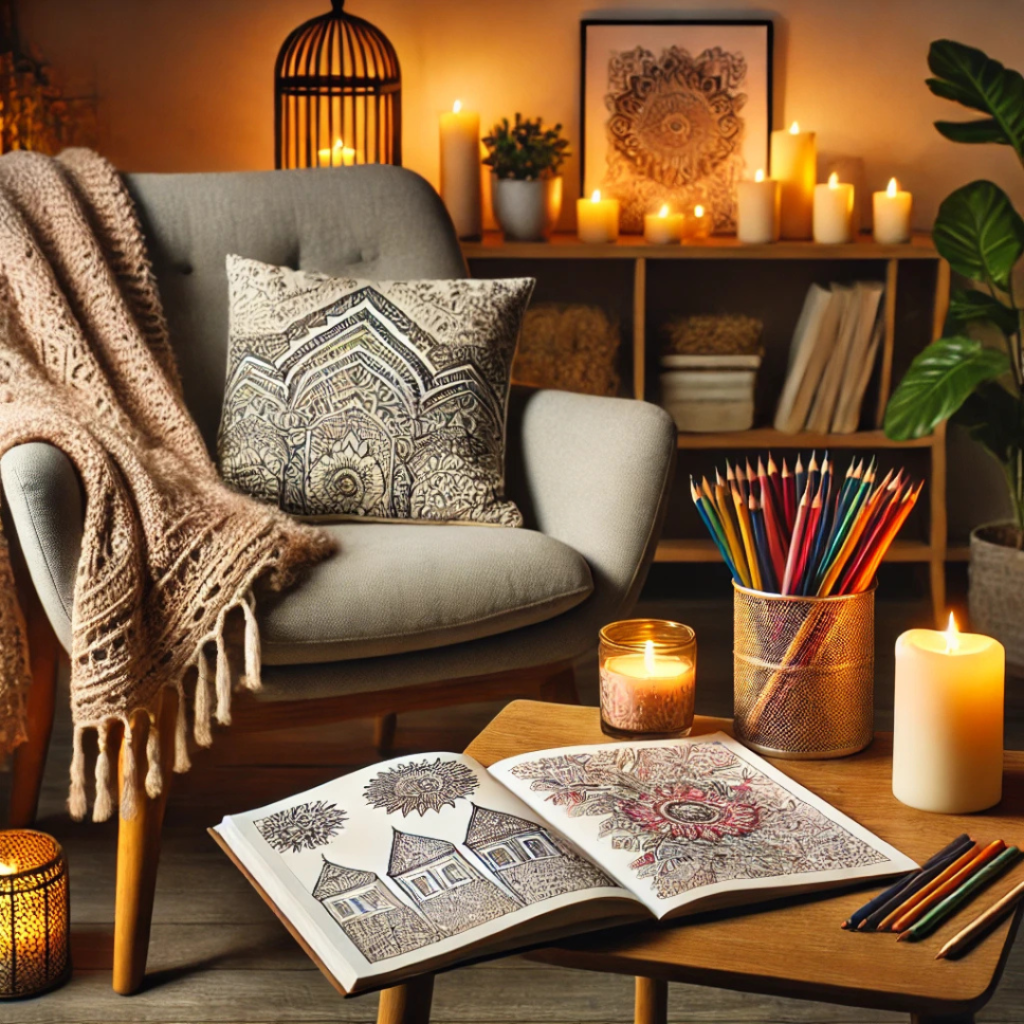
1. Daily Coloring Rituals for Mindfulness and Calm
Set aside 10–15 minutes each day to color in a calm space. Use this time to unwind, reflect, or simply disconnect from digital distractions.
2. Journaling and Reflection Paired with Therapeutic Coloring
After each session, jot down a few thoughts or emotions that arose. This helps connect your creative process with mental clarity and emotional insight.
3. Use Coloring for Emotional First Aid
Keep a coloring book nearby for moments of acute stress or anxiety. Like deep breathing or grounding exercises, coloring can function as a healthy coping mechanism.
4. Group Coloring Sessions for Social Connection and Relief
Whether you’re a teacher, counselor, or community leader, coloring can be a fantastic icebreaker or therapeutic group activity. It encourages connection without requiring verbal expression.
To enhance your technique or explore new styles, check out our guide on must-try digital coloring techniques.
Choosing the Right Tools for Coloring Therapy
To maximize the mental health benefits of coloring, it’s important to use the right tools:
Coloring Books: Opt for books designed with mental wellness in mind. Mandala books, affirmation-based pages, or trauma-informed collections are excellent choices.
Coloring Tools: Use high-quality pencils or markers like Prismacolor Premier for smooth application and a better sensory experience.
Environment: Create a calming environment with soft lighting, calming music, and minimal distractions to support mindfulness.
Why Coloring Therapy Really Works for Mental and Emotional Health
Coloring therapy’s power lies in its ability to relax the mind and focus attention—two things vital to mental wellness.
Long-Term Benefits of Coloring Therapy for Mental Well-Being
Ongoing engagement with coloring therapy supports emotional regulation, anxiety management, and self-esteem. It also gives people a non-verbal way to express complex emotions and regain control during difficult moments. You can explore even more reasons why adult coloring is good for you here.
Coloring as a Tool for Emotional Reset and Personal Discovery
The repetitive motion of coloring, the meditative focus, and the freedom of color choice create a safe space for personal exploration and emotional release—proving that coloring is far more than just a hobby.
Final Thoughts
Coloring therapy for mental health is no longer just a creative distraction—it’s a science-backed, therapist-approved approach to emotional healing, mindfulness, and personal growth. With high-level insights from psychology, breakthrough discoveries in trauma recovery, and trailblazing applications across tech and sensory therapy, coloring has earned its place as a valuable tool in the wellness toolkit.
Whether you’re managing anxiety, recovering from emotional wounds, or simply seeking more calm in your daily life, coloring offers a space to breathe, reset, and heal—one stroke at a time.
❓ Frequently Asked Questions About Coloring Therapy for Mental Health
1. What is coloring therapy for mental health?
Coloring therapy for mental health is the use of structured coloring activities, such as adult coloring books or mandalas, to reduce stress, improve emotional well-being, and promote mindfulness. It’s often used as a self-care practice or alongside traditional therapy.
2. How does coloring help with anxiety and stress?
Coloring activates the brain’s relaxation response, reduces activity in the amygdala (the stress center), and promotes focus and calm. Repetitive movements and visual stimulation help shift attention away from anxious thoughts.
3. Can coloring therapy be used for depression?
Yes. While not a replacement for clinical treatment, coloring therapy can support emotional expression, increase dopamine production (the “feel-good” hormone), and create a meditative state that helps alleviate symptoms of depression.
4. What are the best coloring books for mental health therapy?
Books with mandalas, affirmations, and trauma-informed designs are ideal. Titles like Secret Garden, Enchanted Forest, and Mental Health Is Health are popular choices. These promote emotional healing and mindfulness through intentional design.
5. Is digital coloring as effective as traditional coloring for mental health?
Digital coloring offers similar mental health benefits, especially for those who prefer convenience or have mobility challenges. Apps with ambient sounds and guided prompts enhance mindfulness and replicate the relaxing effects of traditional coloring.


